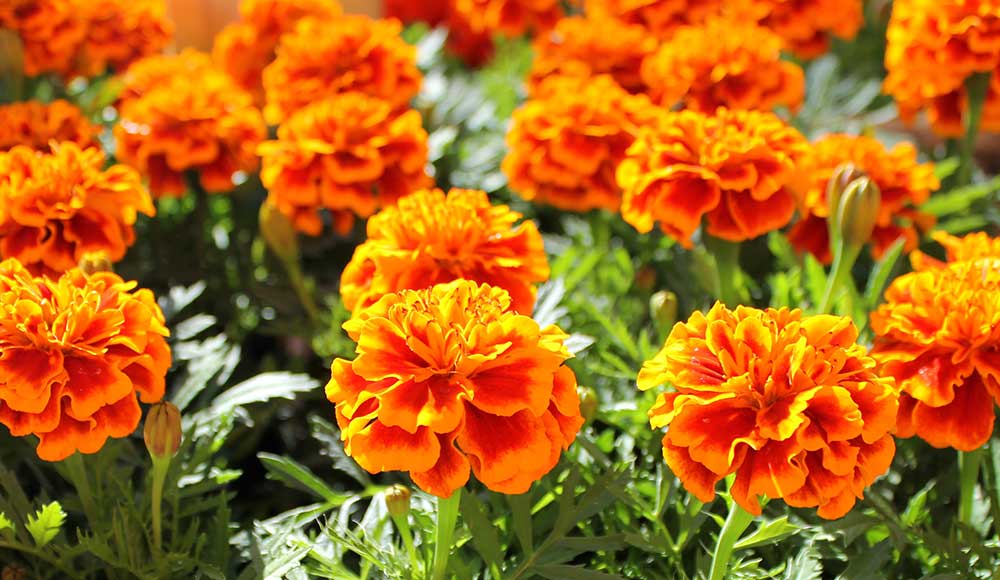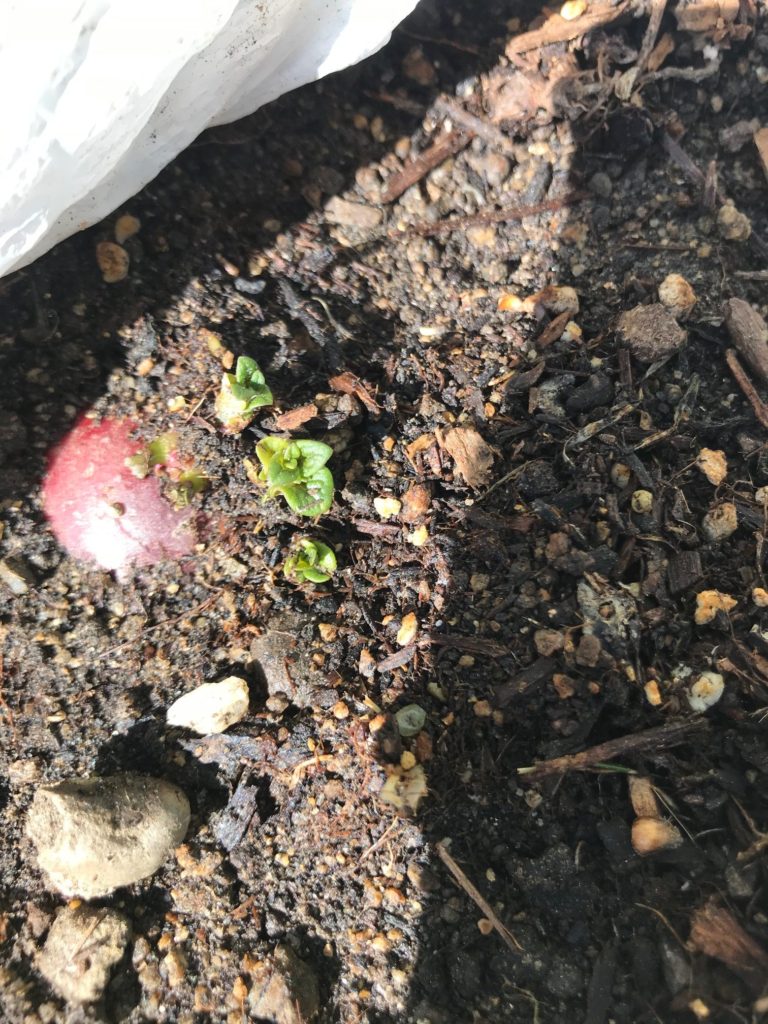Design a Natural Native Garden
By Menaka Rao, published in “What’s New on Everything Earth”, August 2021
Most people’s idea of a garden is usually one of a lush green lawn surrounded by neatly trimmed hedges. However, an unmanicured garden with native plants could be just as beautiful and enjoyable and more suitable for drought prone regions of California and Southern Oregon.
Designing a native garden simply is to mimic nature. Draw inspiration for your planting scheme from plant combinations that grow naturally in the wild nearby. The Native Plant Society in your region is a wonderful resources that can help you choose plants native to your area.
Ideally, try to design your garden in layers just like it occurs in nature with an overstorey of trees, a middle layer of large shrubs followed by smaller shrubs and ground cover. However, if you are a gardener like me that doesn’t like to be restricted to a narrow palette, you could consider mixing in plants with similar water and sunlight needs. Along with natives I like to add drought tolerant plants with interesting foliage and flowers. Avoid using invasive species or high-water use plants. You could also choose three flowering colors such as red, yellow and purple as the core of your planting design. For instance, a combination of lavenders, santolinas and kangaroo paws can add a burst of color and fragrance to any garden. If you prefer to stick to natives, combine coffeeberry plants with wild lilac and yarrows. Some of my favorite plants to use in are:
Trees. These trees are drought tolerant, hardy and attractive choices:
- Bay Laurel (Laurus nobilis)
- Fruitless olive (Olea europaea ‘swan hill’)
- Oaks (Native)
Wildlife favorite shrubs. These plants attract hummingbirds, bees and other pollinators:
- California fuchsia (Epilobium canum) (Native to regions of California)
- Purple sage (Salvia leucophylla) (Native)
- Lavender varieties (e.g. Lavandula stoechas, Spanish lavender)
- Moonshine yarrow (Achillea ‘Moonshine’)(Native)
Shrubs. These shrubs are very versatile, drought tolerant and can be adapted for borders, mass planting or even planted as specimens. They grow quite well when planted with lavenders, thyme, yarrows, salvias, sedums and other drought tolerant plants:
- Manzanita (Arctostaphylos species) (Native)
- California lilac varieties (e.g. Ceanothus ‘dark star’ and Ceanothus ‘concha’) (Native)
- California Buckthorn and other coffeeberry varieties (Native)

Ground covers:
- Emerald carpet manzanita (Arctostaphylos ‘Emerald carpet’)
- Woodland Strawberry (Fragaria vesca)
Menaka Rao is a landscape designer who grew up in India, and now lives in Fremont, California. She has a degree in landscape architecture from University of Melbourne. Her areas of interest include drought tolerant planting, dry gardens and edible landscapes. Contact: ra********@gm***.com
Grow Your Own Pesticides

Pesticide use has increased dramatically around the globe farmers, cities and home gardeners began using it regularly in the 1940’s. Over one billion pounds of insecticides are used every year in the United States alone.
The problem – one of many created by insecticides – is that they kill indiscriminately, inadvertently poisoning pollinators by the millions.
It’s easy to replace poison with clean, green beautiful “insecticides”. Here are just a few plants that do the job… beautifully!

- Dahlias, catnip and petunias.
- Mexican marigolds (the most commonly found in the US) are the go-to plant for repelling a host of insects.
- Chive, Dill and Garlic. Natural insecticides, super easy to grow, perennial… and you can eat them too!
- Nasturtiums, hyssop and chrysanthemums.
- Hyssop is favorite as it repels the chompers but attracts honeybees.
There are also a whole host of natural, non-toxic sprays. My favorite is Captain Jack’s Deadbug. It’s a killer (pun intended) when it comes to aphids, probably the most problematic insect in home gardens.
Finally, beneficial species of ladybugs are super effective at controlling a pests. Fun Fact Alert: A single ladybug may consume as much as 5,000 aphids in its lifetime.
They kill dozens of damaging pests. Plus, they work for free.
You can attract them to your garden with heavy pollen producing plants like sunflowers.
Attract Butterflies to Your Garden or Deck

Photo By: DebraLee Wiseberg/Getty Images
With a little planning, you can attract butterflies to your space from Spring through Fall. Asters (pictured above) are a butterfly favorite, and they are my easiest and most prolific plant. They bloom in the fall, when other butterfly attractors have faded, and last into the winter in milder climates. When the blossoms go to seed in the winter, gather the fluffy seeds and plant more in the spring. Or let the wind do it! See “Eco-Cool Kids” Project 1 for and an aster-planting project.

Chives! Beautiful, perennial, easy to grow in gardens or pots, butterflies and bees love them…and you can eat them! What more could you ask of a plant. They bloom in early Spring, giving butterflies a head start, and will continue to bloom periodically throughout summer and fall.
Some other easy to grow and gorgeous butterfly bushes include Manzanita, Mark orange, coral honeysuckle, Coffeeberry, Ceanothus, California fuchsia, and coyote mint.

See Disappearing Butterflies to learn why it’s important to provide butterfly habitat. Backyard gardeners can make a difference!
Upcycle Plastic Bags to Grow Potatoes

Used large plastic bags or emptied trash bags are perfect for growing potatoes. Growing potatoes in bags rather than the ground works for several reasons. First, you don’t need a garden – just somewhere that gets a lot of sun.

Photo @lisabforce
Second they are much easier to harvest from bags – simply dump them out – than digging them up since they grow so deeply into the ground. Third, you can move the bags around, carefully, to provide more or less sun as the season progresses.
Here’s how:
- Double or triple flimsier plastic bags for a sturdier container, poke a couple of holes in the bottom for drainage, fill to height of about 3-4 inches with soil and roll the bag down to just above dirt level.
- Plant organic seed potatoes or even organic sprouting grocery store potatoes (eyes up!) about 1″ below top of soil. Water well and give lots of sun.

Photo @lisabforce
- As the tubers sprout their green tops, roll the bag up and add more soil up to the base of the leaves. Potatoes will grow all along the length of the stem, so the taller your tater plants get, and the more soil you add, the more potatoes you’ll have.
- When the greenery begins to droop and the blossoms wilt (in 80-100 days), it’s time to harvest. Slit the bag down the side to release the potatoes; or, better, dump out the bag, retrieve the taters, and save the bag and soil for next year.
See The Truth About Recycling to learn why it’s important to reduce, reuse and upcycle plastic. Hint: only 9% gets recycled.
Update: One Potato, Two Potato, 20 Potatoes More!
90 days after planting, here is the result of the above grow-potatoes-in-a-bag project

Potatoes Ready to Harvest 
Just Dump the Dirt out of the Bag 
Potatoes Grow Along the Length of their Stems 
Voila! Plant Several Varieties for a Colorful Harvest 
Given my Carrot Harvest, I Won’t Provide Advice!

